While the history of California’s wine industry goes back far into the nineteenth century, Prohibition meant the end for the vast majority of the state’s vineyards. The period after Prohibition through the 1960s was one marked by cheap jug wines and sweet, fortified high alcohol wines.
After decades of post-prohibition stagnation, a new generation of winemakers in the 1970s dramatically boosted the amount of wine produced in the state. At the same time quality rose rapidly. The 1976 Judgement of Paris established California’s reputation when some of the state’s Chardonnays and Cabernet Sauvignons beat out the best wines of Bordeaux and Burgundy. As the news made it back to the U.S. in Time Magazine, Americans began to drink more and more wine, which was increasingly grown domestically. While this growth spurt wore itself out by the end of the decade, the work of these winemakers set the stage for California to grow into its modern self.
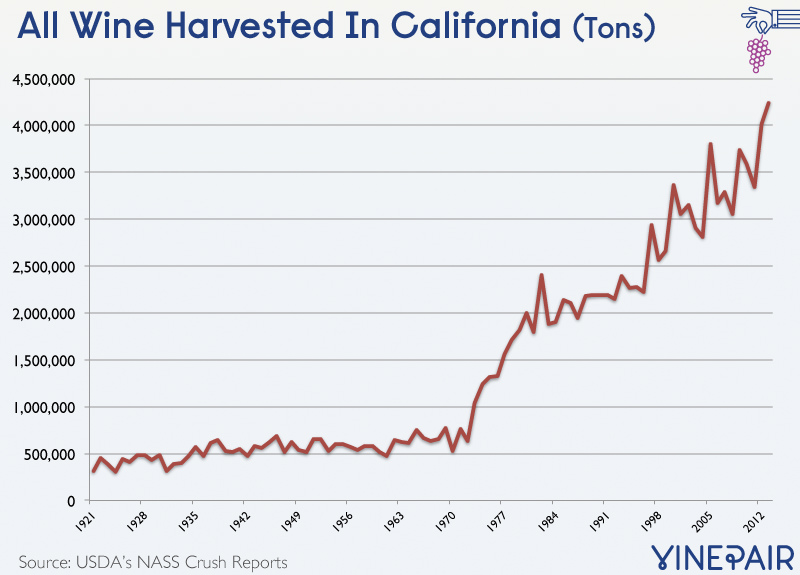 In November 1991, 60 Minutes reported on the French Paradox, which linked moderate wine consumption with improved heart health. America’s thirst for wine exploded, particularly red wine because of the reported link to resveratrol. The California wine industry that they turned to for their wines had changed in an important way during the 1980s, with the adoption and spread of the AVA system. For the first time, as in the Old World, Americans could pick up a bottle of California wine and know exactly where it came from.
In November 1991, 60 Minutes reported on the French Paradox, which linked moderate wine consumption with improved heart health. America’s thirst for wine exploded, particularly red wine because of the reported link to resveratrol. The California wine industry that they turned to for their wines had changed in an important way during the 1980s, with the adoption and spread of the AVA system. For the first time, as in the Old World, Americans could pick up a bottle of California wine and know exactly where it came from.
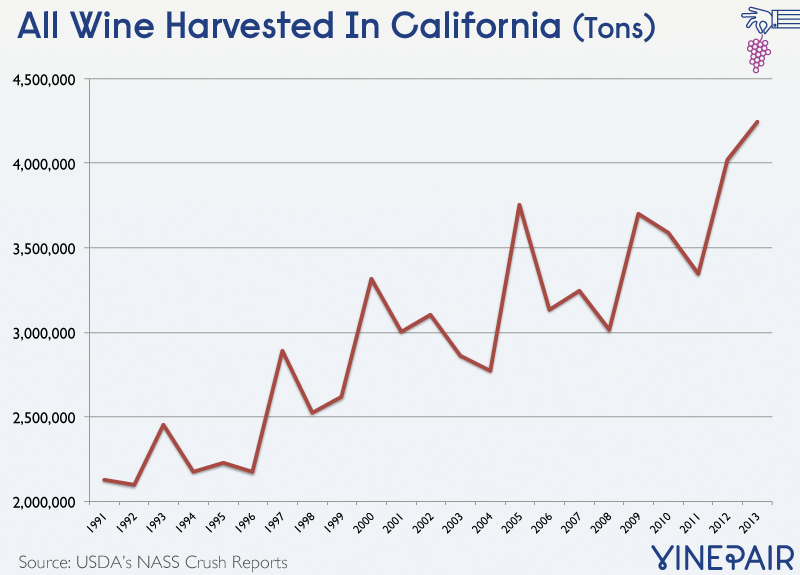
White wine, which had been growing in popularity since the 1980s in California vineyards, was quickly overtaken by red wine.
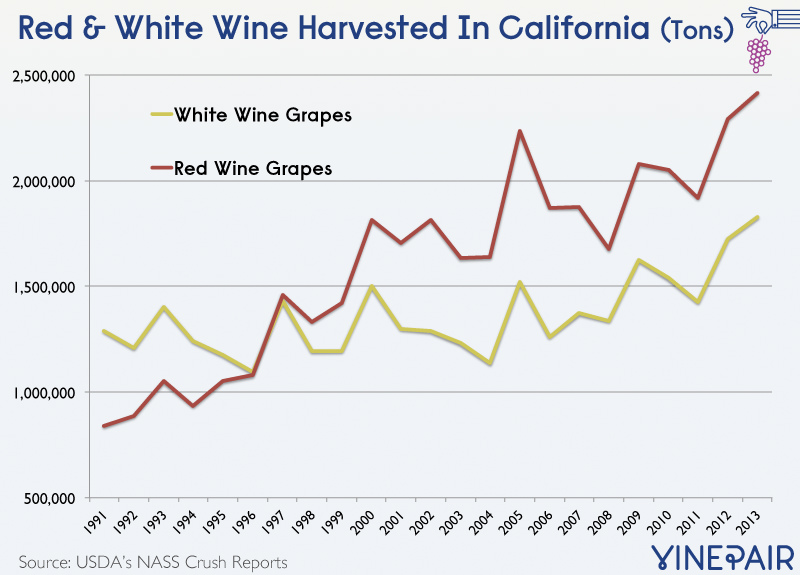
Red wine soared from 39% of the wine harvest in 1991 to a high of 60% in 2006. As wine production grew, quality continued to increase.
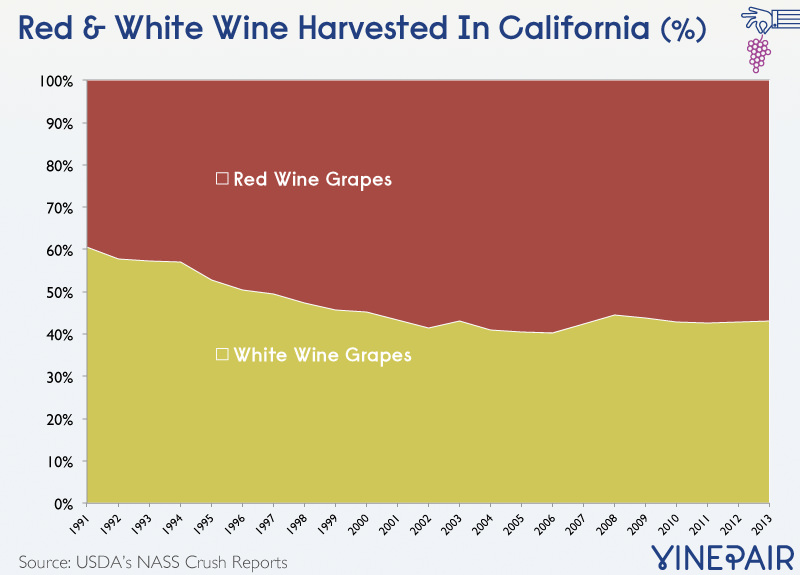 No grape variety benefited more from America’s newfound thirst for red wine than Merlot. Production soared – until 2004 when Sideways came out. Pinot Noir took its place as America’s red wine of the moment, based on Paul Giamatti’s character’s preference for it (however misinterpreted the quote was). Cabernet Sauvignon marched higher and higher, as Americans, influenced by Robert Parker, sought out big, bold, fruit-forward wines. Modern hybrids like Rubired and Ruby Cabernet also came to prominence. Both of these varieties were created by Dr. Harold Olmo, with the intent of yielding mass quantities of grapes in the state’s hot Central Valley. If you’re unfamiliar with them it’s because they generally play an anonymous role in affordable red blends.
No grape variety benefited more from America’s newfound thirst for red wine than Merlot. Production soared – until 2004 when Sideways came out. Pinot Noir took its place as America’s red wine of the moment, based on Paul Giamatti’s character’s preference for it (however misinterpreted the quote was). Cabernet Sauvignon marched higher and higher, as Americans, influenced by Robert Parker, sought out big, bold, fruit-forward wines. Modern hybrids like Rubired and Ruby Cabernet also came to prominence. Both of these varieties were created by Dr. Harold Olmo, with the intent of yielding mass quantities of grapes in the state’s hot Central Valley. If you’re unfamiliar with them it’s because they generally play an anonymous role in affordable red blends.
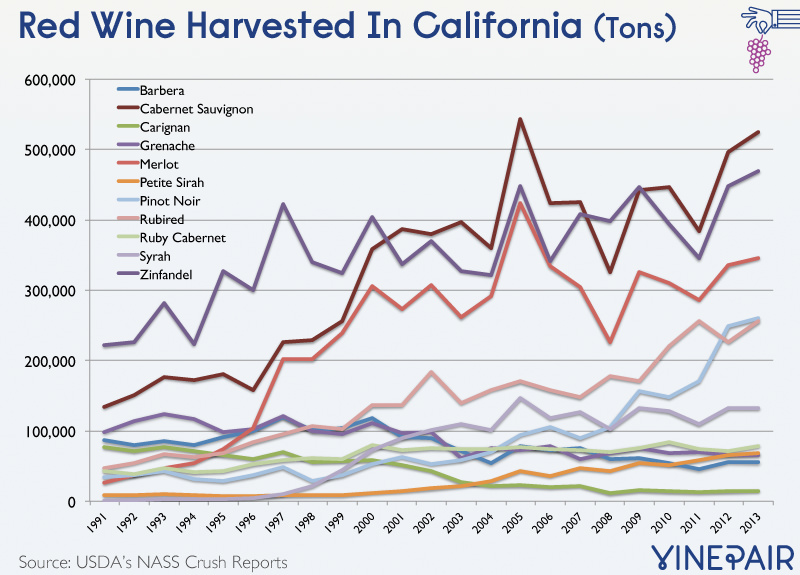
As demand for jug wine continued to fall, grape varieties used to make them were gradually uprooted. Today we associate varieties like Barbera and Grenache with quality (often in blended and varietal Old World wines), but for a long time they were also key sources for California’s bulk red wines. Zinfandel continues to play a dual role: producing both high quality red wines in some of California’s finest AVAs and vast quantities of sweet White Zinfandel in the Central Valley. Syrah, introduced to a wide audience by affordable Australian imports, climbed from scant plantings to a sizable position today. In an interesting twist, the Rhone Rangers, led by Randall Grahm, established a new role for Grenache and Carignan (as well as Syrah), as they began to grow and produce the varieties and blends of France’s Rhone Valley.
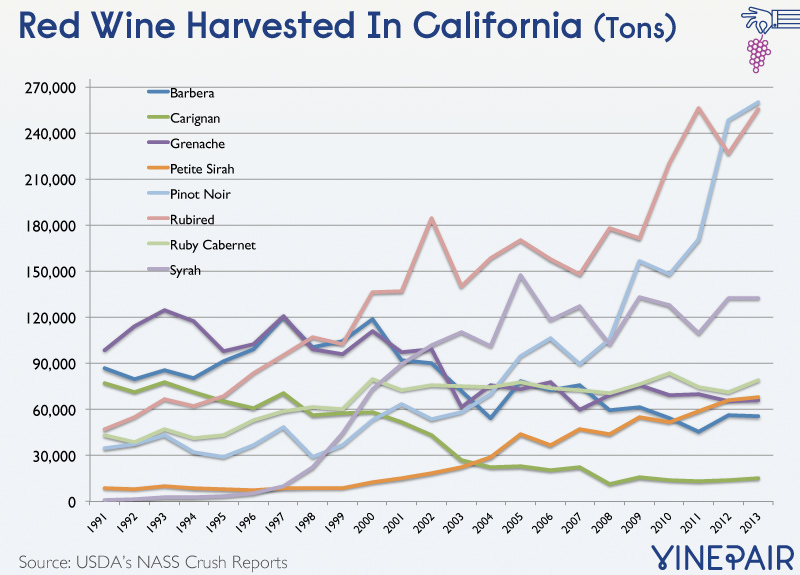 The shift in preference for quality wine over jug wine shows up in the white harvest in the collapse of Colombard and Chenin Blanc and the relentless rise of Chardonnay. Chenin Blanc, famously grown in France’s Loire Valley, was primarily used for jug wine in California. Before it began its steady decline, California’s Chenin Blanc plantings rivaled those in its home, France.
The shift in preference for quality wine over jug wine shows up in the white harvest in the collapse of Colombard and Chenin Blanc and the relentless rise of Chardonnay. Chenin Blanc, famously grown in France’s Loire Valley, was primarily used for jug wine in California. Before it began its steady decline, California’s Chenin Blanc plantings rivaled those in its home, France.
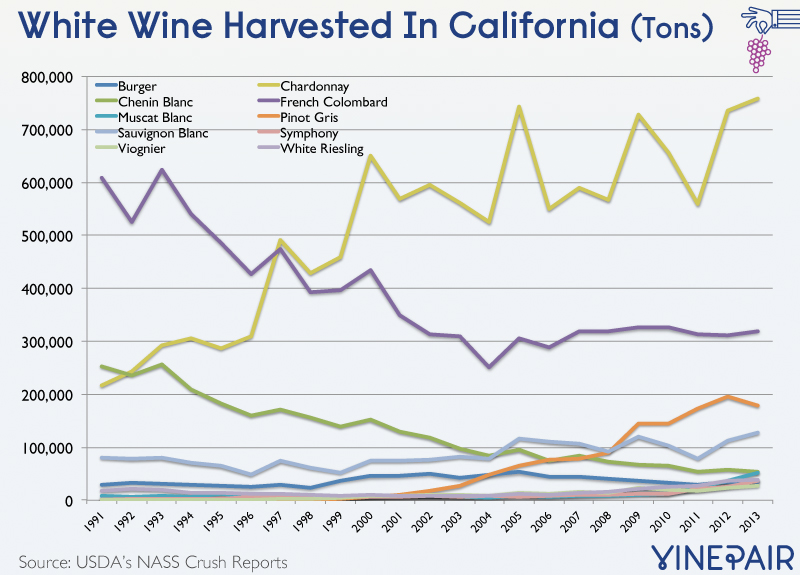 Pinot Gris (Grigio) soared in the early aughts, as the variety was planted widely by producers large and small. Muscat Blanc (Moscato), barely grown in California a couple of decades ago, jumped in popularity on the back of repeated references in popular hip-hop songs. If you’re wondering what Burger is, it’s another variety used for jug wine blends, one which has managed to hold on to a modern role. Symphony is another one of Dr. Olmo’s later hybrids, also used for blending, released in the early 1980s. The effect of the Rhone Rangers can be seen on the white side with the rise of Viognier, and to a lesser extent, Marsanne and Roussanne (not charted).
Pinot Gris (Grigio) soared in the early aughts, as the variety was planted widely by producers large and small. Muscat Blanc (Moscato), barely grown in California a couple of decades ago, jumped in popularity on the back of repeated references in popular hip-hop songs. If you’re wondering what Burger is, it’s another variety used for jug wine blends, one which has managed to hold on to a modern role. Symphony is another one of Dr. Olmo’s later hybrids, also used for blending, released in the early 1980s. The effect of the Rhone Rangers can be seen on the white side with the rise of Viognier, and to a lesser extent, Marsanne and Roussanne (not charted).
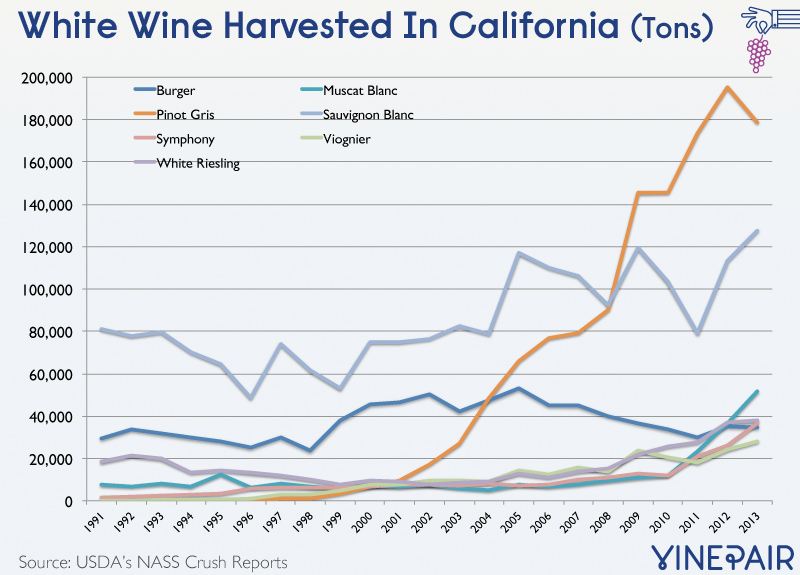 Looking at the most popular red and white varities that aren’t typically used for anonymous blending we can see just how outsized Chardonnay’s dominance is, despite the recent, rapid rise of Pinot Gris. Pinot Noir and Merlot started in similar places back in 1991, and find themselves increasingly close once more, after taking vastly different journeys. California’s future should be diverse and creative. While the popular grape varieties continue to grow, and jug wine fades further out of view, dozens of varieties (some charted, others not, such as Malbec and Petit Verdot) are being harvested in increasingly meaningful volume.
Looking at the most popular red and white varities that aren’t typically used for anonymous blending we can see just how outsized Chardonnay’s dominance is, despite the recent, rapid rise of Pinot Gris. Pinot Noir and Merlot started in similar places back in 1991, and find themselves increasingly close once more, after taking vastly different journeys. California’s future should be diverse and creative. While the popular grape varieties continue to grow, and jug wine fades further out of view, dozens of varieties (some charted, others not, such as Malbec and Petit Verdot) are being harvested in increasingly meaningful volume.
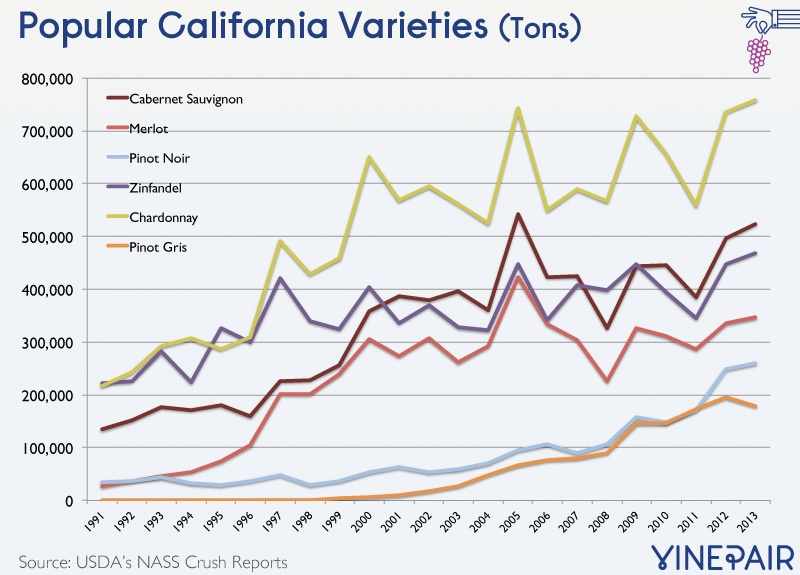
Header image via Shutterstock.com
